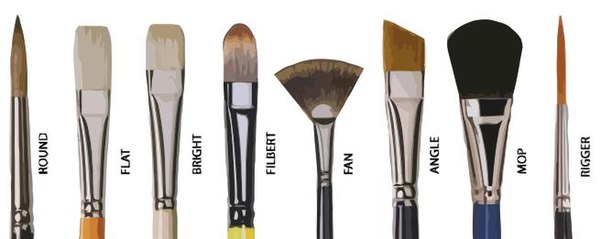Short handled brushes are usually used for flat or slightly tilted work surfaces such as watercolor painting and ink painting, while long handled brushes are held horizontally while working on a vertical canvas such as for oil paint or acrylic paint. [5] : 51
Art sizes
Artists' brushes are usually given numbered sizes, although there is no exact standard for their physical dimensions. From smallest to largest, the sizes are: 20/0, 12/0, 10/0, 7/0, 6/0, 5/0, 4/0 (also written 0000), 000, 00, 0, 1, 2, 3, 4, 5, 6, 7, 8, 9, 10, 11, 12, 13, 14, 16, 18, 20, 22, 24, 25, 26, 28, 30, 2 inch, 4 inch, 6 inch, and 8 inch. Brushes as fine as 30/0 are manufactured by major companies, but are not a common size. Sizes 000 to 20 are most common. [3] [5] : 51
Art handles
Artists' brush handles are commonly wooden but can also be made of molded plastic. Many mass-produced handles are made of unfinished raw wood; better quality handles are of seasoned hardwood. The wood is sealed and lacquered to give the handle a high-gloss, waterproof finish that reduces soiling and swelling. Many brush companies offer long or short brush handle sizes.
Metal ferrules may be of aluminum, nickel, copper, or nickel-plated steel. Quill ferrules are also found: these give a different "feel" to the brush, and are staple of French-style watercolour brushes.






